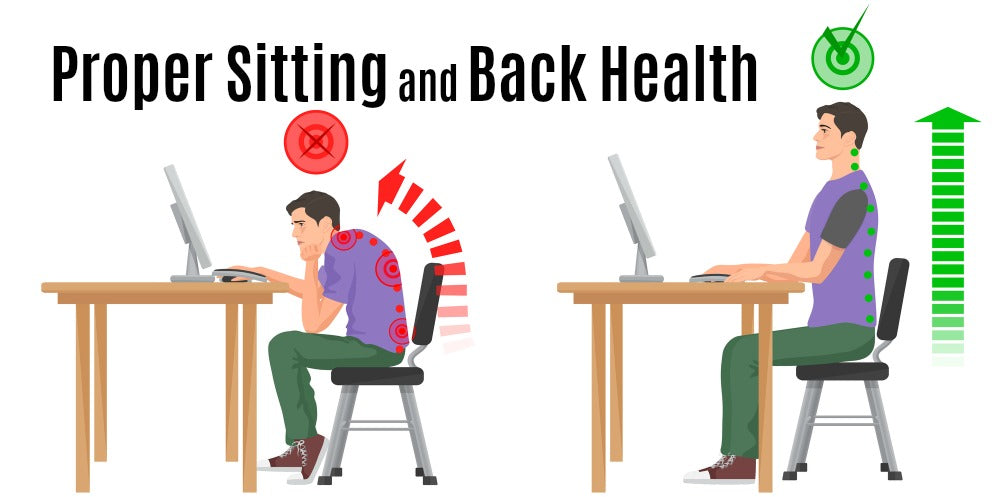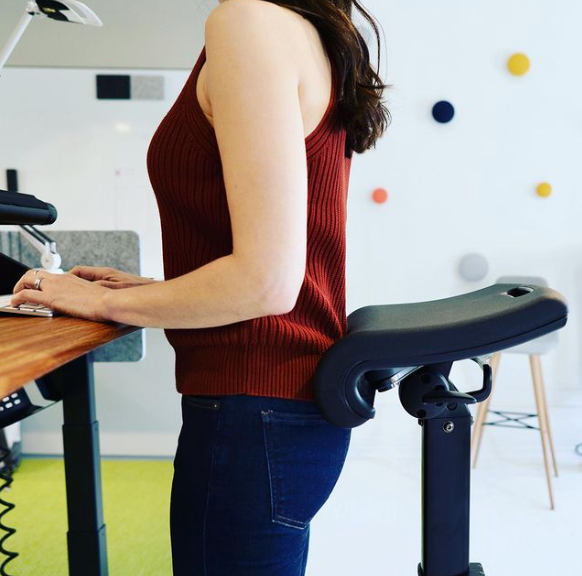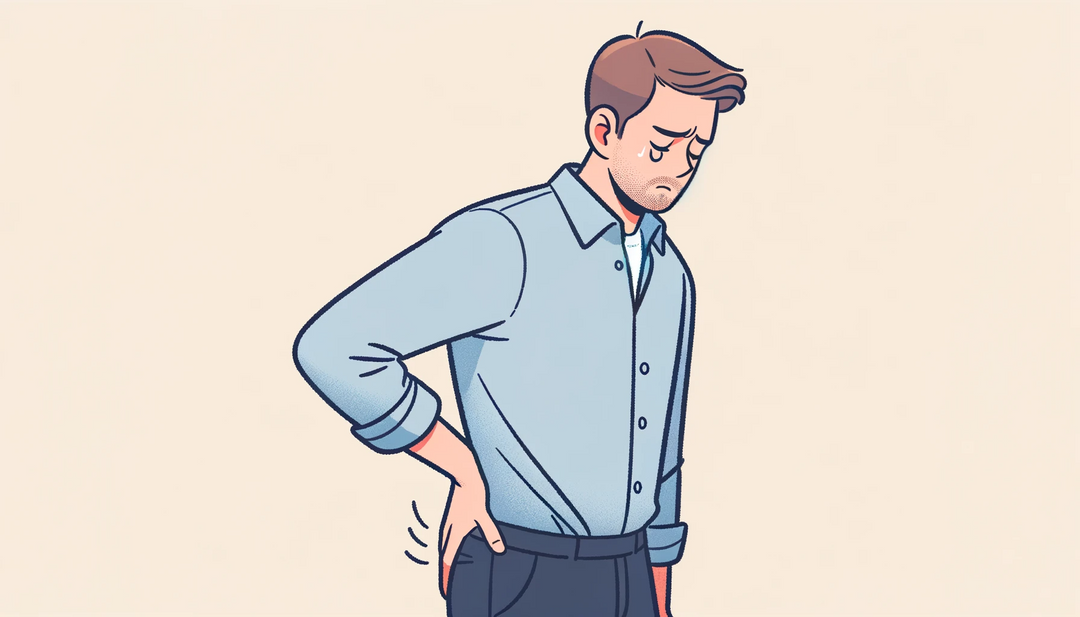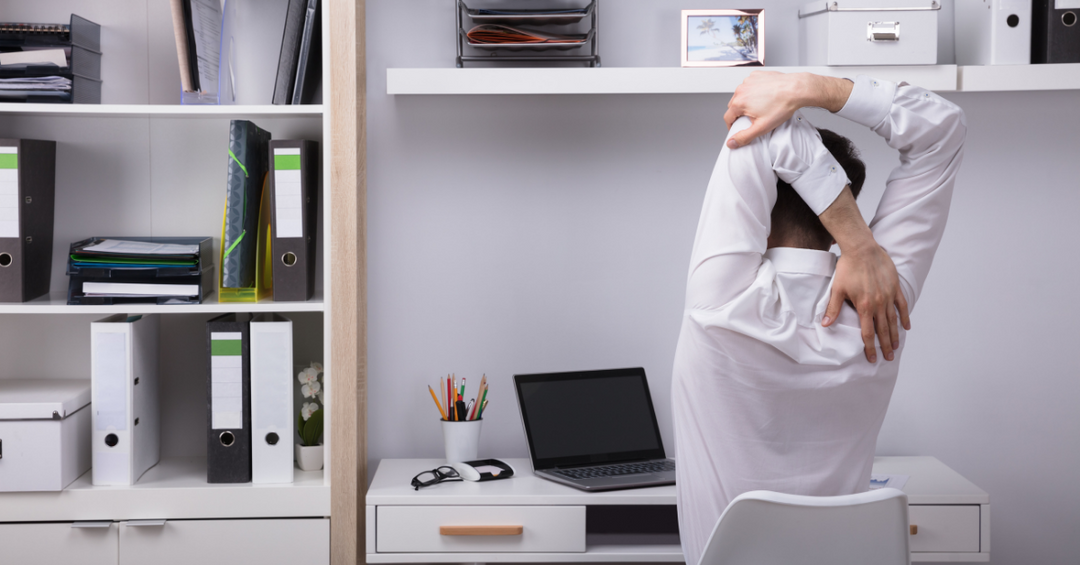How to Sit Properly

Chances are that you spend a lot of your day at a computer for work and recreation. In fact, a recent study found that 86% of Americans sit for their jobs and that the average person sits for 13 hours a day. Sitting has been called the new smoking by many health care professionals due to its link to several preventable diseases such as obesity and diabetes.
Unfortunately, there is no simple answer to address this problem. Although people report that they’d prefer to stand, this can also be tiring for a full work day and lead to other health problems. The proliferation of standing desks and adjustable monitors have helped people have more control over their workstations and posture. But what could make it better? A chair that supports your spine’s natural curves whether you’re sitting, standing, or leaning.
What is Your Spine Supposed to Look Like?
If you look at the side view of a “normal” spine, it appears “S” shaped. The spine’s natural curves give the body support and house the spinal cord in a way that allows adequate shock absorption while maintaining stability. When these natural curves are maintained, our back’s tissues, such as the ligaments and muscles, can also be optimally utilized.
What Happens When We Change the Curve of our Back from Prolonged Sitting Positions?
The postures you assume during the day greatly impact the amount of strain put on your spine. Spend enough time in one posture and the body will adapt to it even if it isn’t ideal. This is really terrible if we’re talking about someone who may have osteoarthritis too.
Do you ever find yourself hunched over your desk staring at your monitor? That’s what we’re talking about. All of a sudden the nice “S” curves of your back turn into a sad looking “C.”
Looking at a picture of the spine in various positions, it becomes clear that extended slouching (lumbar flexion) and sitting are hard on the spine due to the high level of force on the discs. While some bending and leaning is normal for the back in small infrequent doses, the spine is not meant to endure these high levels of pressure for extended periods of time.
In fact, a 2010 study found that extended time in increased lumbar flexion leads to excessive strain and stretching of the low back ligaments and increases anterior shearing forces of the joints. Which is to say, your mother was right when she told you not to slouch.
How Protect Your Back at Work
Office chairs has evolved a lot over the years as people become more aware of the importance of good posture and spinal alignment. It’s important to find a seat that can support the natural curve of the low back (slight extension: a reverse “C”).
Desks have evolved, too. Adjustable height desks allow you to move up and down throughout your workday, and now there’s an ergonomic chair that lets you adjust positions as well.
Yet, even with these advances back pain is still a problem that affects 80% of adults at some point in their life.
A Traditional Chair has Limits
For one, no matter how well you sit, sitting still puts more strain on the back than standing. Additionally, even with conventional lumbar chair support, people tend to relax their core muscles. Pay attention the next time you take a seat. You’ll likely notice this.
Our core is made of slow twitch muscles fibers that are meant to gently support us, even with sitting activities. As nice as it might feel in the short-term to slump down into a chair, it’s harmful in the long run. Being too relaxed while sitting (reaching for computer keyboards, mouses, phones, etc.) can actually add to the problems.
Lastly, with most chairs promoting a 90 degree angle at the hips, the amount of lumbar lordosis (the normal inward curve of the lower spine) is severely limited. With this limitation there is only so much good support can do.
Better than a Traditional Chair
With any problem, it is always important to start with the core of the issue (literally and figuratively in this case). To keep the spine well-balanced, and centered with minimal strain, then we must start with the lower back. When the lower back and pelvis are allowed to assume their natural positions, as on a slightly tilted seat, the rest of the spine will follow suit. Adjust your lower back and pelvis and see how your upper body naturally follows along. This improved posture decreases ligament strain and activates your core, but at a low level that your body can tolerate all day. But sitting on a tilted seated all day might make you feel like you’re slipping or that your clothes are riding up on you.
The LeanRite Elite Sit-Stand Chair is the Future of Chairs
The LeanRite Elite standing desk chair is unique. It easily adjusts to your specific curves to promote pelvic and lumbar alignment no matter what position (and there are several!).
Regularly changing between standing, perching, and sitting promotes optimal circulation, and general flexibility, in addition to providing core activation and disc health. Periodic movement and posture adjustments are key to both health and productivity (good circulation keeps our brains sharp). Having a system that supports our alignment in various positions makes a world of difference.
The LeanRite provides the support needed at the bottom of the spine so that the rest of the spine and body will fall into proper place with ease. Plus, when the spine is adequately supported from the “bottom up” you will find that you don’t need a back support. It’s a great solution to stay energized and healthy at work!
Remember, you didn’t establish poor sitting habits or develop back pain overnight, so using a backless adjustable chair may take some getting used to. Give yourself time to adjust, especially if you have some tight or weak areas. The Ergo Impact Healthy Workplace App can help you pace yourself. We’re certain that you’ll soon sit less - move more- and live better!






Leave a comment